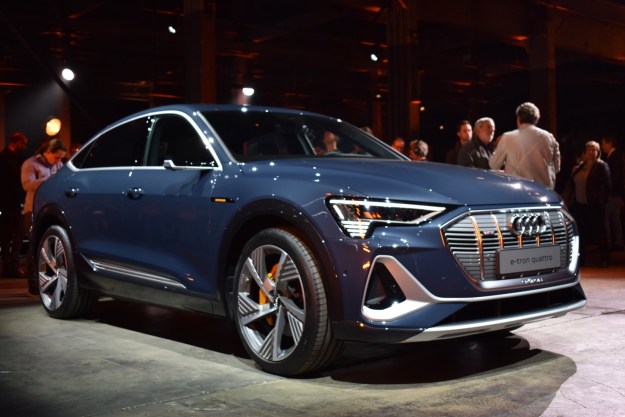Audi has dominated the 24 Hours of Le Mans for more than a decade, and to keep the streak going it’s made some major upgrades to its R18 e-tron quattro for 2015.
The hybrid R18 won Le Mans each of the past three years, and with a host of aerodynamic and powertrain upgrades, Audi is hoping it will be even harder to beat this year.
The monocoque chassis from previous versions remains, but Audi has thoroughly changed the bodywork, adding air intakes to the front fenders and redesigning the side pods.
New headlights feature the same Matrix LED and laser-light tech from the previous R18, an important asset in a 24-hour endurance race.
The hybrid power train’s basic layout is unchanged, but Audi says various tweaks will result in more power.
On the internal-combustion side, there’s a 4.0-liter turbodiesel V6 that produces 558 horsepower and drives the rear wheels. It’s assisted by a 272-hp electric motor that drives the front wheels in brief bursts.
That motor gets its juice from energy recovery during braking, which is stored in a spinning flywheel mounted next to the driver.
Le Mans rules dictate exactly how much energy can be recovered per lap, with a maximum of 8 megajoules and a minimum of 2 megajoules.
Last year, Audi went with a 2-mj system, while rivals Porsche and Toyota each ran cars with 6-mj systems. This year, the four-ringed brigade is doubling energy recovery to 4 mj.
Using more electric power helps conserve fuel, something that’s emphasized almost as much as overall performance under the current Le Mans rules.
This year, Audi could be facing its toughest competition yet. The R18 will face off against updated versions of the Porsche 919 Hybrid and Toyota TS040 Hybrid, as well as the new Nissan GT-R LM NISMO.
In addition to Le Mans, the 2015 Audi R18 e-tron quattro will compete in the full World Endurance Championship. It’s already done some testing at Sebring, and will make its first race appearance at Silverstone April 12.
Editors' Recommendations
- Audi Q6 e-tron ushers in the automaker’s next EV phase
- 2023 Audi Q4 E-Tron first drive: the predictable and traditional EV SUV we need
- Audi’s electric 2022 RS E-Tron GT is a concept that escaped the drawing board
- Audi’s Q4 Sportback E-Tron will have customizable LED headlamps, 279-mile range
- Audi’s stylish E-Tron Sportback will teach its other EV new tricks


